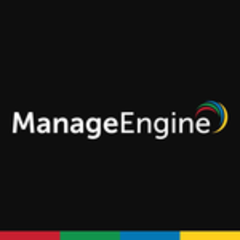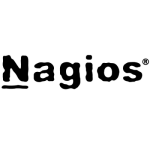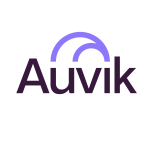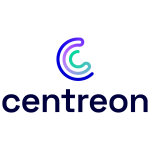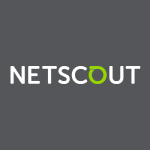What is most valuable?
The features we found most valuable in ManageEngine OpManager are the probe server and reporting because they're pretty good features.
What needs improvement?
What I'd like ManageEngine OpManager to improve on is artificial intelligence. In particular, the machine learning feature should be integrated with the sensor flow. Doing this will give leverage, especially when you look at other products such as the Cisco DNA Center. When a switch goes down, I should be able to build on the correlation of other physical devices it's connected to so that I can integrate that with my CA CMDB. The ManageEngine OpManager team needs to draw a long-term roadmap where that feature becomes an integral part of the solution because right now, machine learning in ManageEngine OpManager is a long process. The solution doesn't have MLS search and I want to see ML being developed and applied for CA CMDB to greatly reduce the burden of tying everything.
For example, if I have a data center switch that goes down now, I should know what server it's connected to, and when that switch goes down at twenty-four ports, I would get twenty-four alerts for different devices plugged in. I should be able to make a correlation that the major problem lies in the switch and not with the twenty-four elements connected to that switch. That is where machine learning should come into play and the ManageEngine OpManager AI should indicate "This is where the root of your problem is." It could be difficult, but this is a feature that should be improved or added to the solution.
What I'd like to see in the next version of ManageEngine OpManager is for the machine learning and AI to be tied with the correlation engine because, at the moment, the existing correlation is lacking in terms of contextual awareness. Contextual awareness has to be more customized so that the operator or the person building or customizing the tool should have the flexibility to tie it with the CA CMDB application and the underlying inventory. This way, ManageEngine OpManager becomes more of a straightforward, next-generation solution concerning monitoring. For example, another player like New Relic has an application management module that's far ahead, but it's still lagging and would still need to catch up in terms of managing needs.
ManageEngine OpManager has integrations through APIs, but still needs further enhancement because there are still certain applications that would take hits, so the level of contextual awareness needs to be built on more, and that takes time.
For how long have I used the solution?
I've been using ManageEngine OpManager for about one year now.
How are customer service and support?
I found the support for ManageEngine OpManager fantastic. I've called the support team several times, and the team always came back to me immediately. There wasn't any delay with the response, and whenever there was a feature that my company felt was missing in ManageEngine OpManager, the product engineering team would include that in the roadmap. The team also indicated other features still being worked on and what has been worked on. My interaction with the ManageEngine OpManager support team has been good so far. There's no doubt about it.
Presale, after-sales, and whenever there's an issue, I would rate the support provided by the product engineers of ManageEngine OpManager as five out of five. I would recommend the solution in terms of the support provided because, in comparison with other products, the support team listens to the customers. It's been a nice experience for me, so far.
Which solution did I use previously and why did I switch?
My company has been comparing products and found out that it's better to stick with the existing product, ManageEngine OpManager, instead of going with another because now the team knows about the issues and downsides and how to address those.
How was the initial setup?
The initial setup for ManageEngine OpManager was very simple. It was very, very easy. On a scale of one to five, with five being very easy and one being very difficult, my rating for the setup is four out of five.
What was our ROI?
Concerning the ROI from ManageEngine OpManager, we're very happy and satisfied because we didn't have to pay for additional overheads, particularly because we now don't need that many admins, so we were able to save. We're able to run the show with just three operators.
On a scale of one to five, with one being the worst and five being the best, I would rate the ROI we get from ManageEngine OpManager as four out of five.
What's my experience with pricing, setup cost, and licensing?
Pricing for ManageEngine OpManager depends on the number of nodes you onboard and whatever pricing is reflected on the ManageEngine portal which offers discounts from ten percent to fifteen percent. It purely depends on the sales volume and the negotiation.
In my organization, there are about one thousand two hundred nodes which cost around $29,000 per year. There's no additional support fee or maintenance fee from ManageEngine OpManager.
Pricing for the solution is highly competitive and I would rate it five out of five. ManageEngine OpManager is one of the most competitive options out there.
Which other solutions did I evaluate?
I did a small POC on SolarWinds, and unfortunately, the supply chain code got hacked and that impacted other SolarWinds products a lot. SolarWinds took a beating, and if that hack didn't happen and there wasn't much impact on other product lines, SolarWinds would be the clear winner over ManageEngine OpManager. Price-wise and support-wise, both solutions are good, but because of the hack, there is a security concern with SolarWinds, and this was a major reason to push back on SolarWinds, otherwise, my company would have gone with that solution.
I also compared ScienceLogic with ManageEngine OpManager, and though ScienceLogic has its engine, the engine fails whenever I try to build custom reports that my customers need. In ManageEngine OpManager, on the other hand, the process is simple. You just export it to a CSV format and you can do whatever you want with your other tools, so it's very easy, but in ScienceLogic, doing it would take a lot of time because of the connectors.
ManageEngine OpManager works better than other solutions because you don't need to be a guru to do simple tasks on it.
What other advice do I have?
I'm currently using ManageEngine OpManager.
Within my organization, thirty people use ManageEngine OpManager daily. The solution is being supported 24 x 7.
In terms of maintenance, a stable code is released every six months, so my team has to go back and plan it accordingly, which means keeping all the servers redundant. During the design process itself, the ManageEngine OpManager team did indicate that every quarter, certain packages would be released because the solution is dependent on Java and other frameworks, so it needs to be patched accordingly. Whenever a new patch is released, or there's a major code release at the design level, you need to keep servers more redundant, so you won't run into any issues, and this has helped my company reduce downtime. The monitoring has been always available and ManageEngine OpManager has never gone down. Only one staff is required for its maintenance.
My advice to others looking into implementing the solution is that if you're a legacy customer and you have budget constraints, ManageEngine OpManager is the way to go because it's a very simple solution for deployment, monitoring, and device availability. Though other competitors have advanced features, if I'm not using those features, then it doesn't matter. I'll be better of with ManageEngine OpManager because it's simple to use.
My rating for ManageEngine OpManager is eight out of ten.
My company is a customer of ManageEngine OpManager, not a partner.
Disclosure: My company does not have a business relationship with this vendor other than being a customer.

